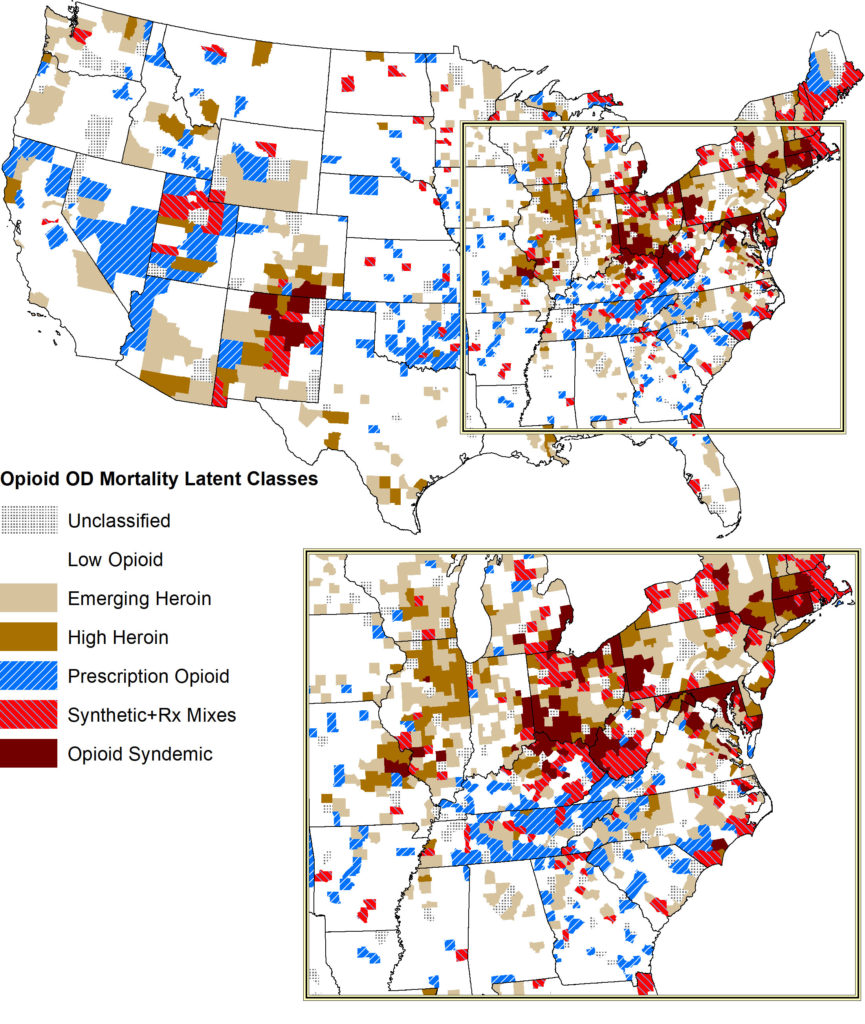New UCLA-led research has found that the proportion of US overdose deaths involving both fentanyl and stimulants has increased more than 50-fold since 2010, from 0.6% (235 deaths) in 2010 to 32.3% (34,429 deaths) in 2021. This rise in constitutes the ‘fourth wave’ in the US’s long-running opioid overdose crisis
Tag: Heroin
Study Shows Differences in How Patients With Heroin Use Disorder Process Drug and Reward Cues
Findings may help inform the development of intervention and prevention strategies
New Research Reveals Men Die of Overdose at Two-to-Three Times Greater a Rate Than Women in the United States
Men were significantly more vulnerable than women to overdose deaths involving opioid and stimulant drugs in 2020-2021, according to a new study analyzing data from across the United States.
Study finds ‘staggering increase’ in methamphetamine deaths tied to opioid co-use
The U.S. methamphetamine mortality rate increased fiftyfold between 1999 and 2021, with most of the added deaths also involving heroin or fentanyl, researchers report in the American Journal of Public Health.
How AI Can Help Design Drugs to Treat Opioid Addiction
ROCKVILLE, MD – Approximately three million Americans suffer from opioid use disorder, and every year more than 80,000 Americans die from overdoses. Opioid drugs, such as heroin, fentanyl, oxycodone and morphine, activate opioid receptors. Activating mu-opioid receptors leads to pain relief and euphoria, but also physical dependence and decreased breathing, the latter leading to death in the case of drug overdose.
Rutgers Emergency Medicine Expert Available to Discuss Rise in Use of Street Drug “Tranq”
Lewis Nelson, chair of the department of emergency medicine at Rutgers New Jersey Medical School, is available to discuss the rise in use of the animal tranquilizer xylazine (“tranq”), which becomes more dangerous when cut with fentanyl and heroin. The…
Human Cocaine and Heroin Addiction Is Found Tied to Impairments in Specific Brain Circuit Initially Implicated in Animals
Study results suggest the pre-frontal cortex-habenula circuit is potentially amenable for targeted interventions and prevention.
Real-time opioid overdose tracking system shows rise in the time of COVID-19
An epidemic that was already raging before COVID-19 arrived has flared up in recent months, according to a real-time tracking system in Michigan. It shows a 15 percent rise in suspected opioid overdose deaths since March, compared with the same time last year, and a 29% rise in first responders’ use of the rescue drug naloxone.

Large majority of state’s heroin users want to reduce use; syringe programs helping during COVID-19 crisis
A new survey of people who inject illicit drugs in the state of Washington yields positive and important findings for policy makers as the world struggles to deal with the COVID-19 pandemic, said authors of the survey by the University of Washington and Public Health-Seattle & King County.

Regional trends in overdose deaths reveal multiple opioid epidemics, according to new study
A recently published study shows the United States in the grip of several simultaneously occurring opioid epidemics, rather than just a single crisis. The epidemics came to light after the researchers analyzed county-level data on drug overdose deaths. The study highlights the importance of different policy responses to the epidemics rather than a single set of policies.